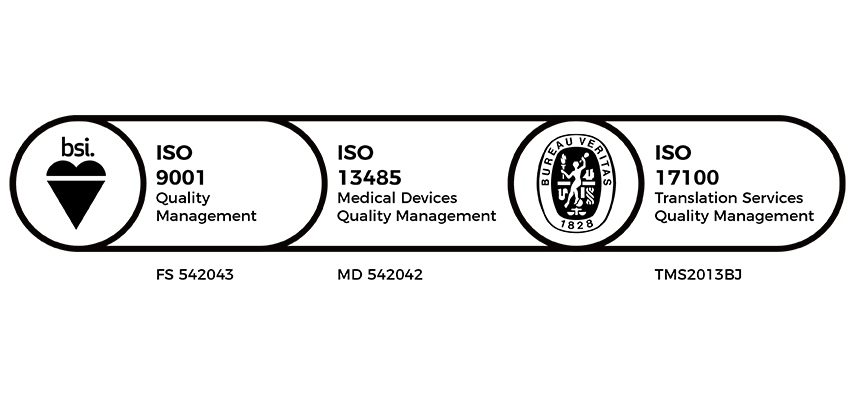Multilingual SEO Website Translation
Optimizing web content to drive traffic from global audiences through multilingual SEO and website translation services
Search engine optimization, commonly known as SEO, is an important marketing process brands rely on to increase the amount of traffic coming to their websites, providing one of the biggest areas of opportunity to enhance the performance of multilingual website translations. Basic examples of methods that organizations use to improve results in their SEO website translation can include creating and optimizing a regular publication such as a blog through the effective use of keywords and links to relevant websites, as well as regularly updating their websites with relevant page content in all of their key site languages. At the highest level, SEO website translation is about knowing what audiences in your target market are searching for, then building content that corresponds word-for-word to their search habits, linguistic preferences, and innate cultural expectations for web content. Seen in greater complexity, multilingual SEO is a combination of on-site SEO, off-site SEO, and technical SEO, which together make websites likely to rank in specific Search channels.
For businesses competing in global markets, creating multilingual SEO website translations for their online brands is a necessary step in the process of localizing products and services for overseas consumers. As a leading provider of translation and localization services in over 250 languages, CSOFT can help companies develop and optimize their online content for audiences in different languages, enabling them to gain traction for their offerings.
Multilingual Website Translation: SEO Essentials
Domain and URL Structure
In the United States, the most common and credible domain for all commercial websites is “.com”, while educational institutions, government bodies, and nonprofit organizations are denoted with “.edu”, “.gov”, and “.org”, respectively. However, these standards vary greatly country to country. The equivalent of “.com” in Germany, for example, is “.de”. Additionally, there are different formats involved in pinpointing a domain. ccTLD, for example, refers simply to changing the “.com” to “.de”. Subdomains, on the other hand, keep the last four characters intact but change the beginning of the URL as required for the market; for example, in “de.site.com” or “fr.site.com”. This is important to consider when expanding to a global market, as having the most common and familiar domains grows brands’ credibility and searchability.
Keywords
A crucial step to successful multilingual SEO website translation is identifying the common keywords and key phrases that consumers or clients are likely to use when searching for your product or service. Oftentimes, a potential customer will lack in-field sophistication or expertise, so it is important to make your content as accessible and searchable as possible through the use of familiar, local terms. Additionally, in-country linguists can ensure effective targeting of specific populations by including cultural nuances, key phrases, and region-specific terms or expressions.
Learn more about CSOFT’s search terms translation services.
Hreflang Tags
Hreflang tags are indications that search engines use to determine both the language that a multilingual website translation is in as well as its intended region. For example, on a page intended for a UK audience, a hreflang tag on the site map indicating “en-gb” will correctly inform the search engine where the target audience is located, their language, and where it should prioritize hits from a search.
Support from Professional Linguists
Every language is a unique, complex, and dynamic entity, changing steadily and sometimes suddenly over time. When implementing SEO website translation, it is essential to use experienced, native linguists and in-country subject matter experts to ensure the up-to-date linguistic and cultural appropriateness of your content.
Multilingual SEM: Boosting Paid Online Search Results
When it comes to online marketing to various countries and regions, the battleground of the search engine results page (SERP) depends on a few key factors, with one focus being multilingual search engine marketing (SEM). One of the most effective ways to grow a business and reach new customers, SEM for international audiences requires translation, localization, and in some cases transcreation to satisfy search engine requirements and to find and captivate possible buyers. Localization services for SEM allow businesses with international customer bases to get the biggest bang for their buck by adapting the original language used in their keyword, key phrase list, and digital ad campaigns so there is maximum traction and all target demographics can feel and become engaged.
Learn more about our SEM localization services.


质量标准
作为一家通过ISO 17100:2015、ISO 9001:2015和ISO 13485:2016认证的公司, CSOFT华也国际的翻译流程包括多轮校审,遵循风格指南,使用具有至少7年经验的主题专家(SME)和语言学家。凭借20多年的行业经验,我们已经开发出成熟的翻译、编辑、校对(TEP)以及项目管理流程。
数据安全
CSOFT华也国际深谙安全管理敏感信息对客户的重要性。为了确保最高的保密标准,CSOFT华也国际的数据和安全程序通过了ISO 13485:2016、ISO17100:2015和ISO 9001:2015的认证,并符合ISO 27001信息安全的最佳实践。在我们所服务的所有行业和部门中,这些协议确保了在整个本地化过程对敏感信息和隐私的保护。
了解更多.

即刻联系 CSOFT 华也国际
详细了解 CSOFT 将如何满足您的翻译需求 ,请拨打 CSOFT 华也国际亚洲办公室联系电话 +86-10-5736-6000。您也可以点击此处,发送文件给我们以获取报价信息。
您还可以点击此处发送招标文件至 CSOFT 华也国际 ,我们将根据项目需求为您打造个性化的翻译服务。
